Category Archives: Allgemein
About the sheer limitless grammar of storytelling in animation and visual effects
Once again FMX emphasized on the latest technical achievements and their artistic challenges and chances for animation and visual effects. In his humorous and philosophical keynote about bridging the gap (motto of this year’s FMX conference in Stuttgart)
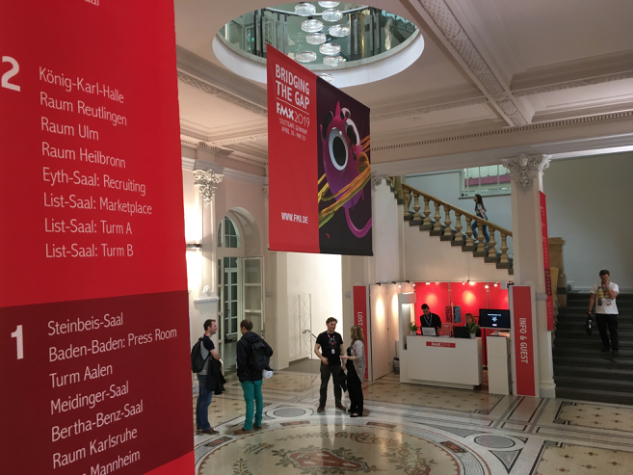
Dr. Jan Pinkava referred to the greek word for art which is τέχνη, and states: “Art is tech and tech is art”. Later in his talk he mentioned the “halo effect of technical difficulty” and addressed the stake of technology for the cinematic experience.
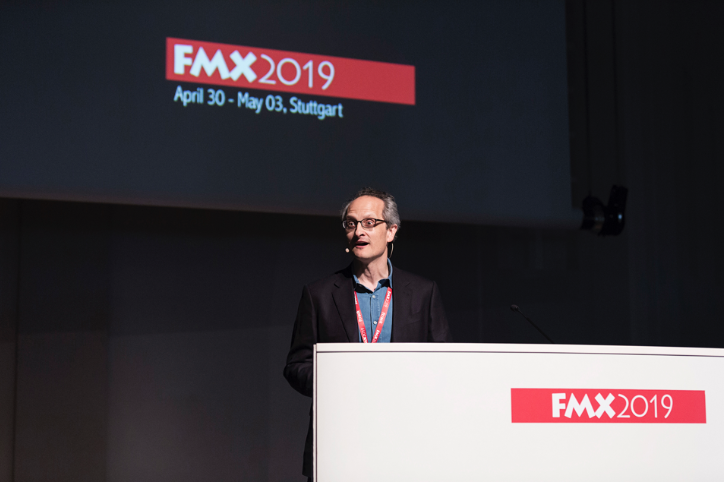
Photo©Dominique Brewing and Luzie Marquardt
Four days of FMX left an impressive mark how today’s filmmaking is driven by the speed of computing and algorithms just to impress and to capture the audience.
In fact, the power of computing has been used for two contrary creative poles of visualization: high abstraction through stylization and on the other side of the spectrum – authentic realism.
To mention the most popular example stylization first, the academy award winning animated feature production “Spider-Man: Into the Spider-Verse” employed newly developed tools to achieve the comic print look in the movie.
Once the general half tone style has been defined more artistic decisions had to be made to obtain the illusion of “print-film”. Thus, the team around VFX supervisor Danny Dimian tested new ways of substituting photorealistic motion blur (with rolling shutter imitation, animation in twos- twelve images per second, lines on edges) and innovative depth-of-field applications such as chromatic aberration, reducing level of detail, abstraction of background elements, smears and stretches and misalignment of color passes for defocus effects. Remapping illumination, hand painted look of highlights and displacement of colors supported the 2d-ish comic look. Read more about this in fxguide.
Moreover, machine learning algorithms have been used to graphic lines on the character’s faces. Lighting supported rich and bold colors, reflections were stylized and graphic elements such as actions lines, curves and scratches were added.
Another impressive example for stylization has been demonstrated by Kevin Baillie (Method Studios, Creative Director & Sr. VFX Supervisor)at FMX. Talking about the visual effects of the photoreal feature “Welcome to Marwen” directed by Robert Zemeckis, the seamless blend of humans and dolls was an impressive visual experience. Scanning the human actors, making a 3d print of their physical dolls, rescanning the dolls and merging real eyes and lips into the CG dolls lead to an unique character appearance. Also, new cinematographic techniques were invented for shooting the miniature world, such as digital tilt-shift lenses and variable diopters to set focus on bent focus planes using a “focus curtain”.
In order to achieve this “cinematic mini-landmark” look (Julian Wood), 84 million hours of rendering were required, using 200.000 processors provided by the company Conductor Technologies.
Also, Dave Walvoord VFX Sup (DWA) makes a note on render power for the animated feature “How To Train Your Dragon: The Hidden World” – 69% of the full render capacity of the whole movie has been used to create the never-before-seen hidden world of an underwater volcano with its giant waterfalls, mushrooms, corals and glowing crystals. This highly stylized world of magical ecosystems is indeed an eye candy- and an evidence for the equation of render power and production value.
The character of Light Fury is a medium-sized Strike Class dragonand rather an animal in the wild than a pet. Supervising Animator Thomas Grummt explains the importance of solid references. Thomas Grummt Supervising Animator (DWA) and Dave Walvoord VFX Supervisor (DWA)
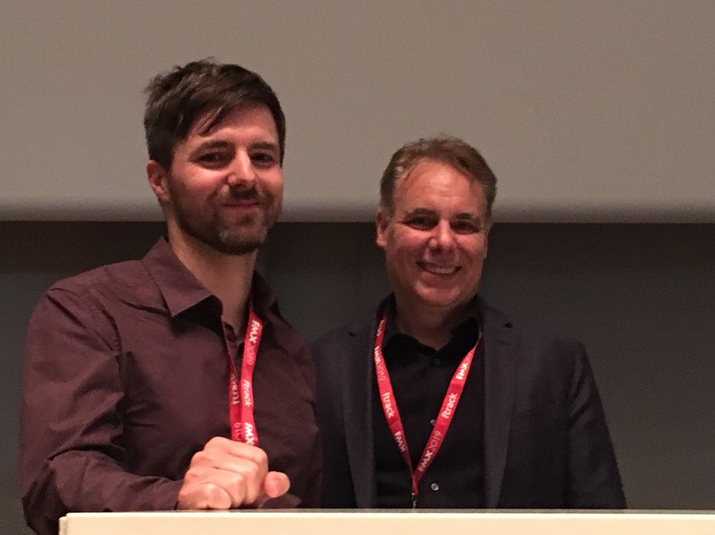
He has studied the movements of big cats, salamanders, birds and white terns before the award winning software Premo has been used for animation.
Nine years ago, Thomas Grummt was attending the talk on “How to Train Your Dragon 1” at FMX. Being a student at Stuttgart Media University, he took the chance to contact the speaker after the presentation. Today, when he walked through the streets of Stuttgart, he said: “I was a bit shocked how much time has passed. But it’s very nice to be back. When I had my presentation yesterday, there were a bunch of students that had basically the same questions that I had back in the days. It feels good to give back a bit.”
We also took the chance to talk to Thomas Grummt during FMX and asked how the increasing realism of cg characters influences animation and what he would recommend to animation students.
Interview: Professorin Katja Schmid
Sound: Peter Ruhrmann
Article written by Professor Katja Schmid
Simon Griesser is an Animator and Director. Previously he worked for different companies as a Game Developer, 3D Artist, 3D animator/ motiondesigner in Vienna and California. Together with Phillip Comarella he founded Salon Alpin, an animation studio in Lissbon and Vienna.
The studio creates innovative, animations, short films and games with a focus on poetic storytelling. They call themselves a ‘sustainable storytelling studio’. Some of their clients include MontBlanc, Greenpeace, Austrian newspaper Falter..
Since 2018 Salon Alpin is represented by Passion Picture Studios. Best known for “Falter inferno” (2015), “Old Man’s Journey” (2017) and the recently with the Annie Award 2019 for Best TV Broadcast Commercial awarded “Rang Tan” (2019).
See more about their work: Salon Alpin.
At FMX 2019 Griesser is talking about designing and directing Greenpeace commercial ‘Rang Tan’ and the conceptual production process of storytelling. We had the chance to sit down with Simon and talk to him about his work as a Director, the immense creativity and uniqueness from Salon Alpin when it comes to animation and techniques and of course about the earth, protecting the environment and raising awareness.
Article written by Lisa Schubert & Malena Trachte
Camera: Lisa Schubert
Interview: Malena Trachte
Editing: Malena Trachte
Synesthesia from Studioproduktion Event Media on Vimeo.
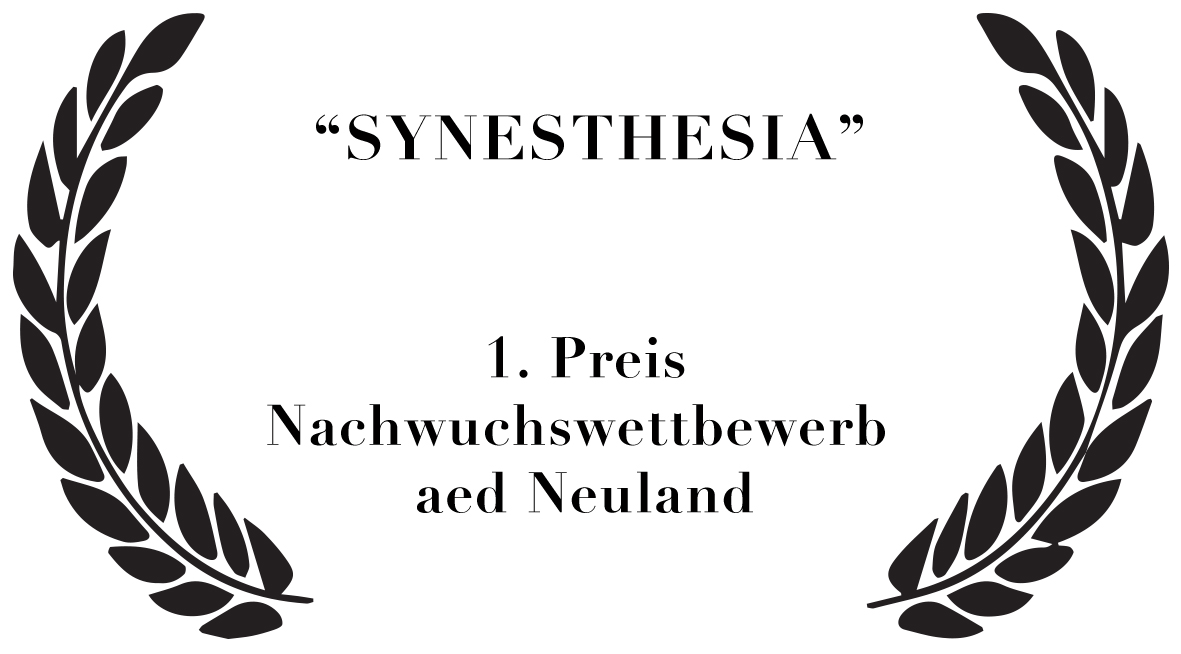
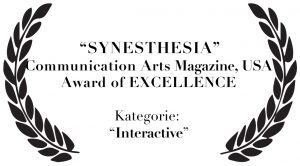
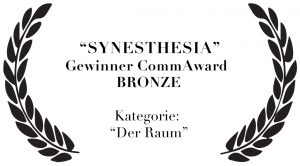
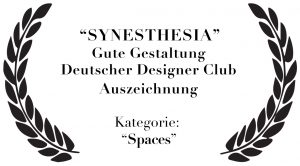
Synästhesie beschreibt das Phänomen der Doppelbelegung von Sinnen. Es findet eine mediale Übersetzung von Ton, Farbe, Form, Bewegung und Bild statt. Dem Besucher wird in der interaktiven Rauminstallation die besondere Art der Wahrnehmung ganzkörperlich vermittelt.
Zu den weitverbreitetsten Synästhesien gehört die Farb-Graphem-Synästhesie. Dabei werden Zahlen, Buchstaben und geometrische Formen bestimmte Farben zugeordnet. Welche Farbe welchem Symbol zugeordnet wird, ist individuell verschieden. Beschrieben wird das Phänomen so, dass beim Lesen des Zeichens eine Farbinformation unterschwellig mitübermittelt wird. Dadurch ist eine Art Aura um das Symbol zu spüren. Die Schriftfarbe, in der das Symbol abgedruckt ist, bleibt dabei unverändert.
Eine andere Form der Synästhesie lässt Töne farbig erscheinen. Jedem Ton ist eine bestimmte Farbe zugeordnet. Ein Musikstück erzeugt bei einem Synästheten einen Farbenteppich, der sich aus den einzelnen Farben der gespielten Töne zusammensetzt.
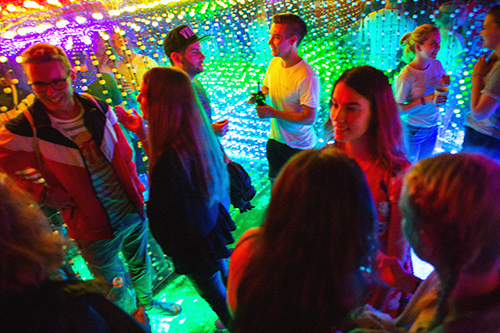
Der Farb-TonRaum
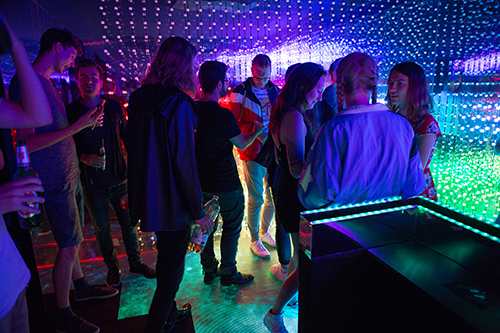
Der Farb-TonRaum
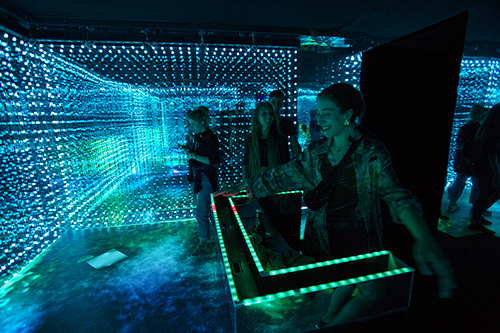
Bedienung der Schnittstelle durch Gäste
Für die meisten Menschen ist Synästhesie schwer nachzuempfinden. Einigen Synästheten ist ihre besondere Begabung auch gar nicht bewusst, da diese Wahrnehmung Normalität ist. Es wurden diese fremde Alltäglichkeit abgebildet und der Gast erhielt einen Einblick in die Realität eines Synästheten.
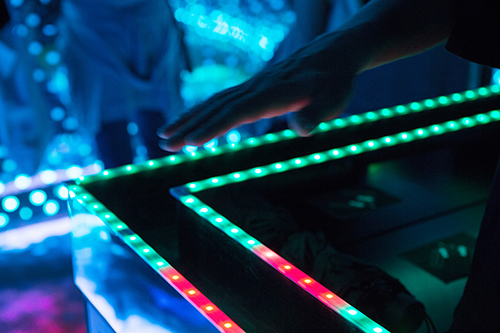
Detail der Schnittstelle durch Gäste
Auf 125qm wird ein multimedialer Raum gestaltet. Endless Mirrors, ein interaktiver LED Boden, Gestenerkennung, dreidimensionale Sound- und Lichteffekte werden benutzt. Der Erlebnisraum macht Besuchern das neurologische Phänomen der synästhetischen Sinneswahrnehmung erlebbar. Die Installation ist gleichermaßen unterhaltsam und informativ.
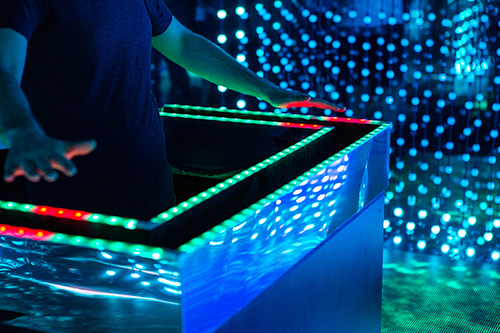
Bedienung der Schnittstelle durch Gäste

Detail der Schnittstelle durch Gäste
Durch die Verbindung medientechnischer und konzeptioneller Ebene wird das Phänomen Synästhesie auf einer Abstraktionsebene dargestellt.
Die Enge Verbindung von Technik und Gestaltung, Treffen und Interviews mit Synästheten ist bei Synesthesia ausschlaggebend, um ein zwar abstrahiertes und unterhaltsames, gleichermaßen aber auch informatives Erlebnis zu bieten.
synesthesia – making of from Studioproduktion Event Media on Vimeo.

Informationsraum
Team:
| Name | Aufgabengebiete | Studiengang |
|---|---|---|
| Franziska Schicht | Projektmanagement, Dokumentation, PR | MW7 |
| Marcel Werner | Sponsoring, Finanzen, Grafik | MW7 |
| Niels Keller | Kreativ Direktion, Regie, Idee, Mediensteuerung | AM7 |
| Jonathan Tenhunen | Film, Video, Bühne | AM7 |
| Valentin Schneider | Bühne, Film, Video, Licht | AM7 |
| Markus Hirsch | Programmierung, Mediensteuerung | AM7 |
| Maria Mühr | Licht, Kreativ Direktion, Regie | AM7 |
| Kai Kirn | Ton, Programmierung, Mediensteuerung | AM7 |
Technologien:
Hardware: LED Fussboden, LED BALLS, 2 Wege Lautsprecher, MP-Player, Verstärker, Akku Betriebene Scheinwerfer Mobil-Lights, LED Panels Pixelpitch 3,6 mm, Bildprozessor für LED Barco DX 700, InsoreLED S6b Indoor, Projektor VIVOtek Qumi Q7 Plus und Q 8, Gobos, Richtlautsprecher IBRL 110 AX, Sonusaudio Focus Q, Direktionaler Lautsprecher DIR-LSP, Audiozuspieler BrightSign LS322, Fullrangelaufsprecher, Verstärker, Power Cables für LED Panels, Data-Link-Cables für LED Panels, Power Boxen für LED Panels, Cinch-Kabel, Videotechnik: LG 38UC99-W, ACER XR382CQK, Samsung 34E790C, LG 34UC98-W, Asus PG348Q EEK B, Philips BDM4037UW 101,6 cm (40″) LCD-Monitor mit LED-Technik silber/weiß, Intel Mini-PC NUC Kit NUC6i7KYK Skull Canyon, Logitech G430 Surround Sound Gaming Headset, Kopfhörer HS-STD, Sennheiser HD 65 TV, Panasonic PT-DZ680EK, Samsung ME32B
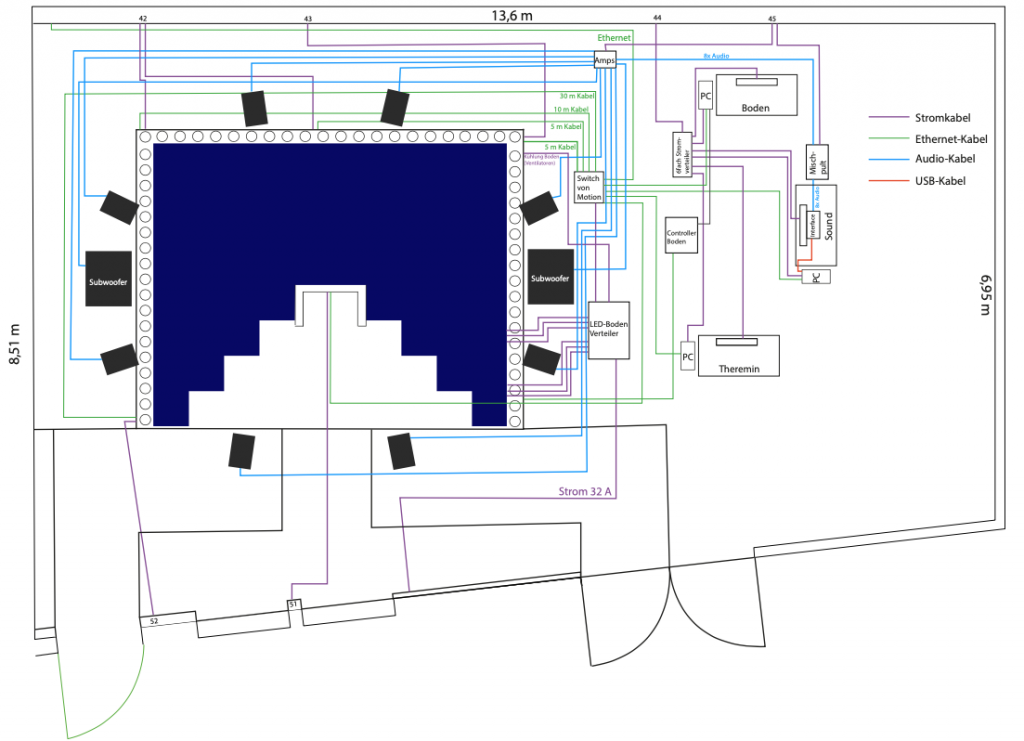
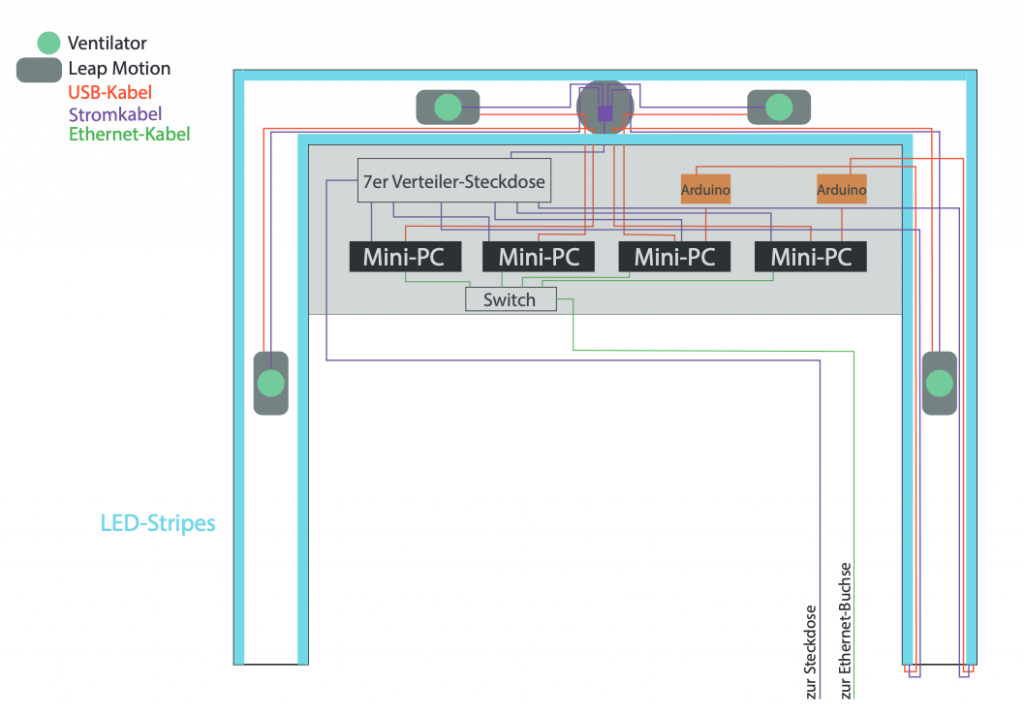
Sponsoren:

One of the superstars at FMX 2019 – Trisha Gum is a director and screenwriter. We got to interview her and talked with her about imaginary childhood friends, where she gets her inspiration of and about the differences of directing animators vs directing actors. She also gives some great advice for young filmmakers that are just starting out and tells us about the challenges of being a female director and finding your voice.
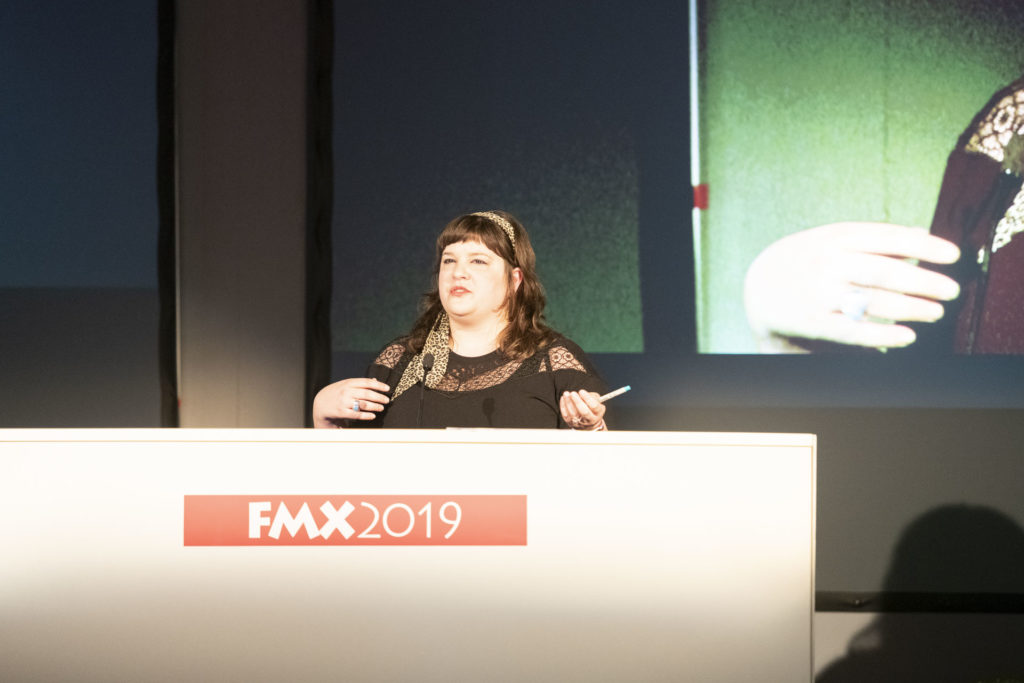
Trisha began her career in art direction and as a set designer, but always knew she wanted to tell stories and worked on her own animations on the side. As a cut paper artist she brings a unique, style and tone to her projects. For her work on Amazons “Tumble Leaf” she was rewarded with an Emmy in 2015. Her latest work includes Story Lead for „The Lego Batman Movie“ and Co Director for „The Lego Movie Two“.
At FMX she talked about storytelling and concept art and takes part in the discussion “Women in Animation presents: Focusing Female Firepower – The path to inclusivity”.
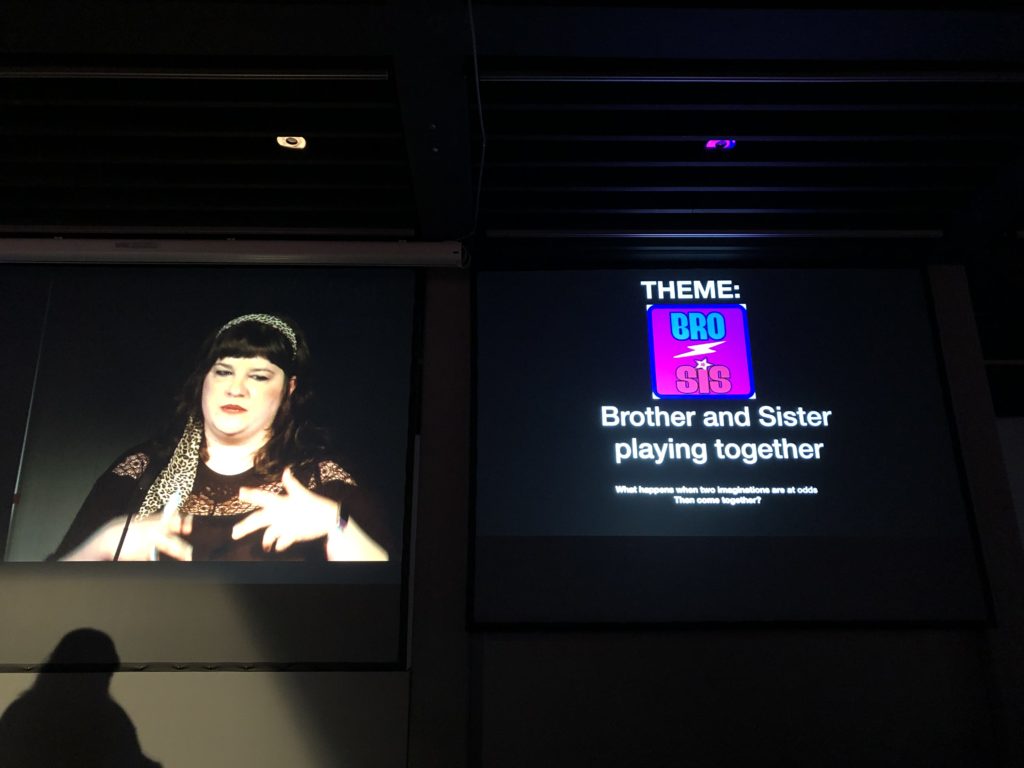
Check out Trishas work: https://trishgum.com/home.html
https://vimeo.com/user10827191
Article written by Lisa Schubert
Interview: Lisa Schubert
Camera: Peter Ruhrmann
Audio: Avina Graefe
Editing: Malena Trachte
Immersive Reality and VR Artist Jenn Duong talks about her experiences starting out in the VR Industry, what the future might hold, the importance of having uncomfortable conversations and how she feels about virtual reality in Game of Thrones.
Jenn Duong is a VR Producer who has an impressive portfolio, having worked with Google, Adidas and most recently the UN. She is a Co-Founder of Women in VR/AR, a community for women, minorities, and allies to connect and collaborate and as well of SH//FT (Shaping Holistic Inclusion in Future Technology) that established VR scholarships for women and minorities.
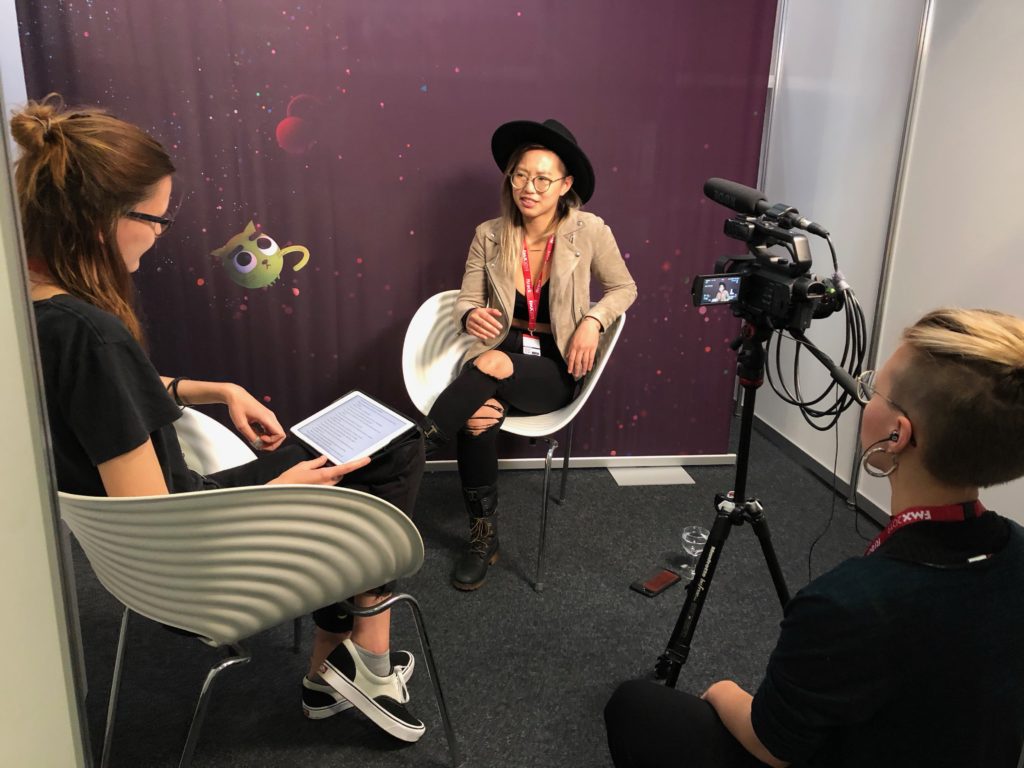
While talking to her, it became obvious that she is passionate about her work and how much she cared about creating a positive social impact on the industry. Having the chance to talk to such a game changing young woman is indeed very inspiring.
You can find Jenn and her work at https://www.jennduong.com/
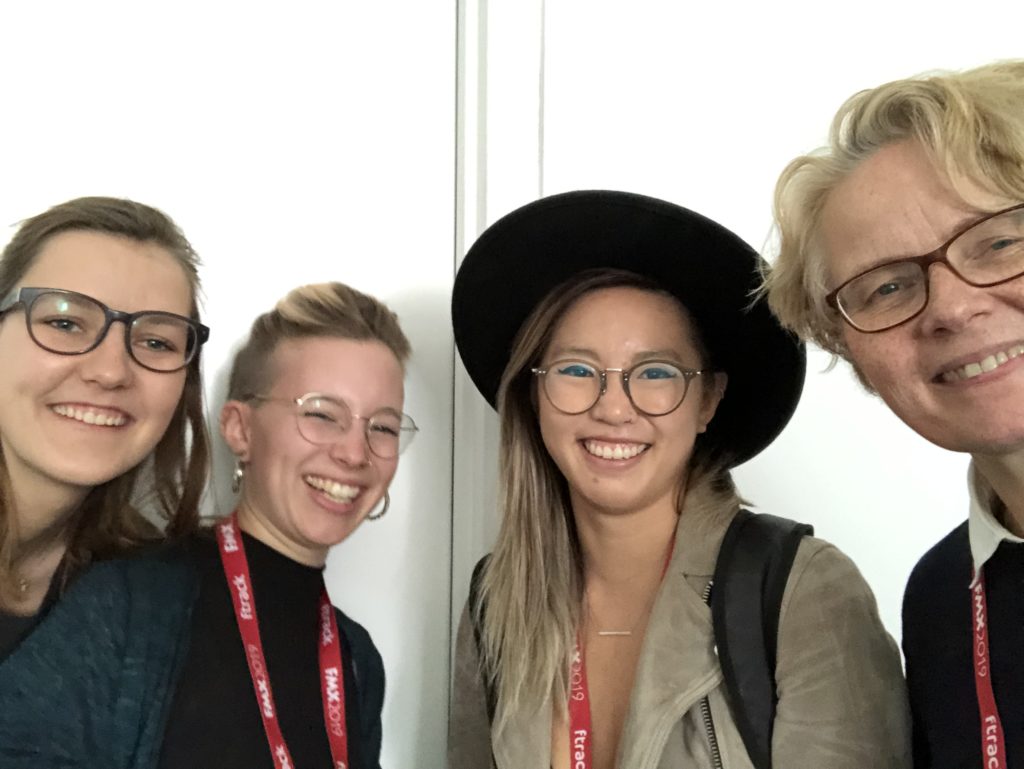
Interview: Lisa Schubert
Camera + Editing: Malena Trachte
Supervision: Prof. Ursula Drees
Article written by Lisa Schubert
About the authors:
Lisa Schubert ist a young illustrator and graphic designer from lake constance, studying at University of Media, Stuttgart to learn more about animation. She loves 2D animation and is never to be found without her sketchbook.
Malena Trachte is a young philosopher from Nowhereland. She recently started her studies at the University of Media in Stuttgart to find new and creative ways of storytelling, learning as much as possible about audio, visual and interactive media engineering.
Ursula Drees is teaching as a full professor at the University of Media in Stuttgart. She is responsible for experience spaces, called “Event Media” – architectural spaces, fully equipped with media, that interact with the visitor. Ursula Drees studied at the University of Art in Berlin. Her mentors were VALIE EXPORT and JOACHIM SAUTER. She spend more than 10 years working in the industry at major digital companies like pixelpark A.G., artemedia A.G., Filmstudios Babelsberg and UNIFIEDFIELD Incorporation in New York City prior to opening her own studio. She won various international prizes like the 42. New York Festival Finalist Award, Gold at the 8. International TV Awards Festival in Cologne, the Communications Award of Excellence in New York, the Print’s Magazines Winner of Digital Art to name a few. She writes about topics like „Narration in Media Spaces“, „Game systematics in Media Spaces“ or „Experience Design in Media Spaces“.

